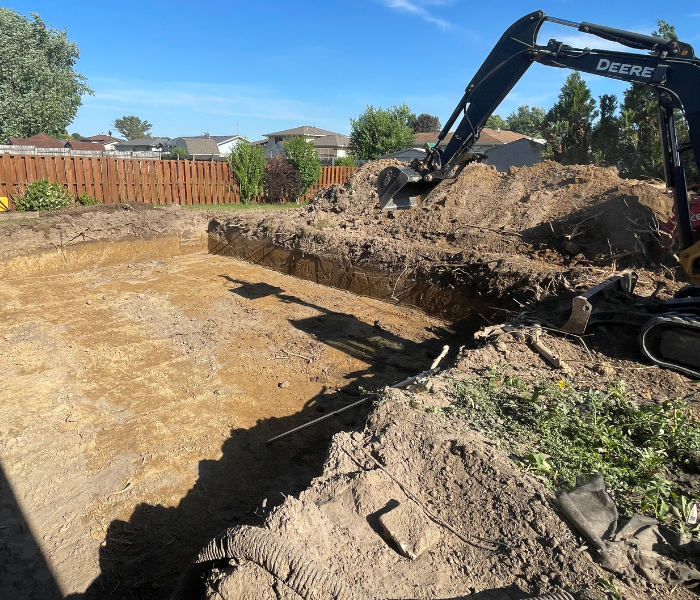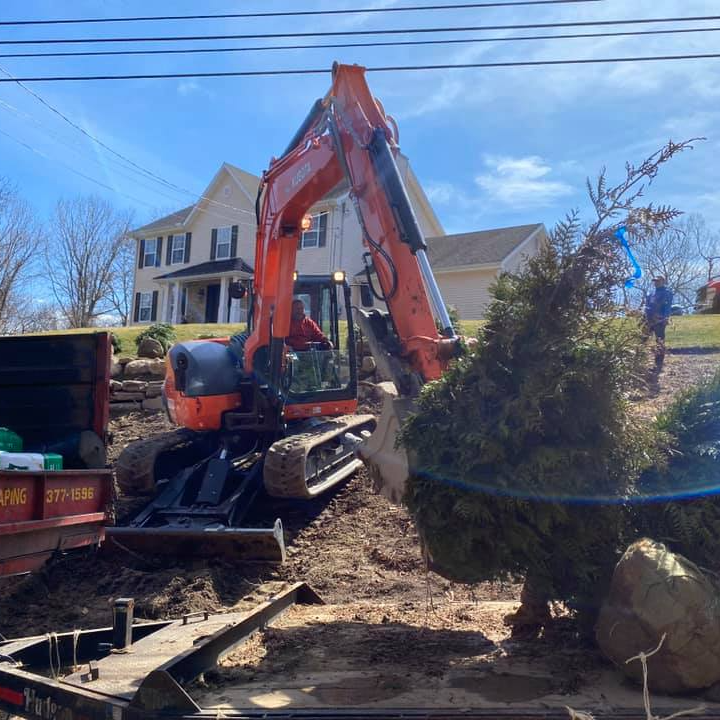Thorough Expedition: The Scientific Research Behind Superior Excavation Practices
The realm of excavation methods is a domain name where science links with workmanship to unearth the mysteries hidden below the planet's surface area. From old hand devices to modern hydraulic excavators, the evolution of excavation methods has actually been a testament to human ingenuity and technological improvements. Nonetheless, what truly sets exceptional excavation methods apart is a deep understanding of geological concepts, paired with the utilization of innovative devices and techniques. By checking out the scientific research behind these techniques, we can uncover the secrets that exist beneath our feet and appreciate the precision and proficiency that go right into every dig.
Development of Excavation Techniques
Throughout history, the advancement of excavation methods has played an important role in progressing building methods and archaeological discoveries. From the simple tools made use of by our forefathers to the advanced machinery utilized in modern-day times, the progression of excavation approaches has actually considerably transformed exactly how we approach different projects.
In old times, hands-on labor with standard tools such as wheelbarrows, pickaxes, and shovels was the main approach of excavation. This labor-intensive process restricted the deepness and range of excavations, often leading to slow development and limited access to specific sites. As people advanced, so did the tools and techniques made use of for excavation.
The Industrial Change marked a transforming factor in excavation techniques with the introduction of steam-powered machinery. In contemporary times, innovation plays an essential role in excavation, with developments like General practitioner systems, drones, and 3D scanning enhancing precision and effectiveness in the area.
Duty of Technology in Excavation

The integration of sophisticated innovation has actually fundamentally changed the field of excavation, boosting precision and performance to extraordinary degrees - lancaster trenching. One of the vital technological innovations that has dramatically impacted excavation methods is the utilization of GPS systems.
In addition, the advent of 3D modeling and simulation software application has structured the planning process for excavation tasks. Engineers and operators can currently imagine the whole excavation procedure before beginning, recognizing potential difficulties and maximizing operations. Combined with this, the application of drones in excavation tasks has actually helped with airborne studies, volumetric measurements, and site examinations with unmatched rate and accuracy.
Geological Concepts in Excavation
An understanding of geological concepts is vital for making certain the structural integrity and security of excavation websites. Geological elements play an essential function in establishing the feasibility and security of excavation projects (lancaster excavation). One crucial geological concept to consider is the sort of soil or rock existing at the site. Different dirt types, such as clay, sand, or gravel, have differing degrees of stability and need different excavation techniques. As an example, cohesive soils like clay may need additional support to avoid collapses, while sandy soils may be vulnerable to disintegration throughout excavation.
Furthermore, the geological framework of the area, consisting of mistakes, fractures, and rock developments, should be carefully analyzed to determine potential threats and difficulties. Digging deep into near geological fault or unpredictable rock formations can bring about instability and prospective threats. By carrying out extensive geological studies and analysis, designers and excavators can create techniques to minimize dangers and make certain the successful conclusion of excavation projects. Eventually, incorporating geological concepts right into excavation methods is crucial for accomplishing secure, efficient, and lasting results.

Most Current Devices for Excavation
In the world of excavation methods, contemporary developments in tools have actually revolutionized the efficiency and accuracy of excavation procedures. These drones see here can offer comprehensive aerial studies of excavation sites, offering real-time information on topography and possible dangers.
One more cutting-edge device getting popularity is the execution of 3D printing innovation for creating customized excavation equipment. This enables the production of specialized tools that are customized to the certain needs of a task, boosting efficiency and decreasing downtime.
Additionally, advancements in products science have led to the advancement of stronger and a lot more durable excavation devices. septic ohio. Tungsten carbide-tipped excavator accessories, as an example, offer remarkable efficiency in challenging ground problems, boosting efficiency on-site
Scientific research's Impact on Excavation Practices

In addition, scientific research study on dirt technicians and geotechnical engineering has given valuable insights right into soil behavior, allowing excavation experts to make enlightened decisions concerning excavation techniques and dirt stablizing techniques. In general, scientific research proceeds to drive innovation and improvement in excavation methods, making excavation jobs extra reliable, cost-effective, and sustainable.

Verdict
Finally, the development of excavation methods has been greatly affected by innovations in modern technology and a much deeper understanding of geological principles. The current devices and tools utilized in excavation have improved performance and precision in the field. The application of clinical understanding has significantly boosted excavation methods, resulting in more sustainable and effective approaches for digging deep into various sorts of products.
In the realm of excavation methods, contemporary developments in tools have reinvented the effectiveness and precision of excavation processes. By leveraging scientific principles, the excavation sector has been able to significantly boost performance, precision, and security in excavation processes. GPR enables excavation teams to non-invasively check and map subsurface frameworks, energies, and potential risks, allowing them to intend excavation jobs with higher precision and decreased risk of crashes.
In addition, clinical research on soil technicians and geotechnical engineering has discover this info here provided beneficial understandings into dirt habits, allowing excavation specialists to make informed choices pertaining to excavation techniques and dirt stablizing methods. Generally, scientific research continues to drive development and improvement in excavation practices, making excavation tasks much more efficient, cost-effective, and sustainable.